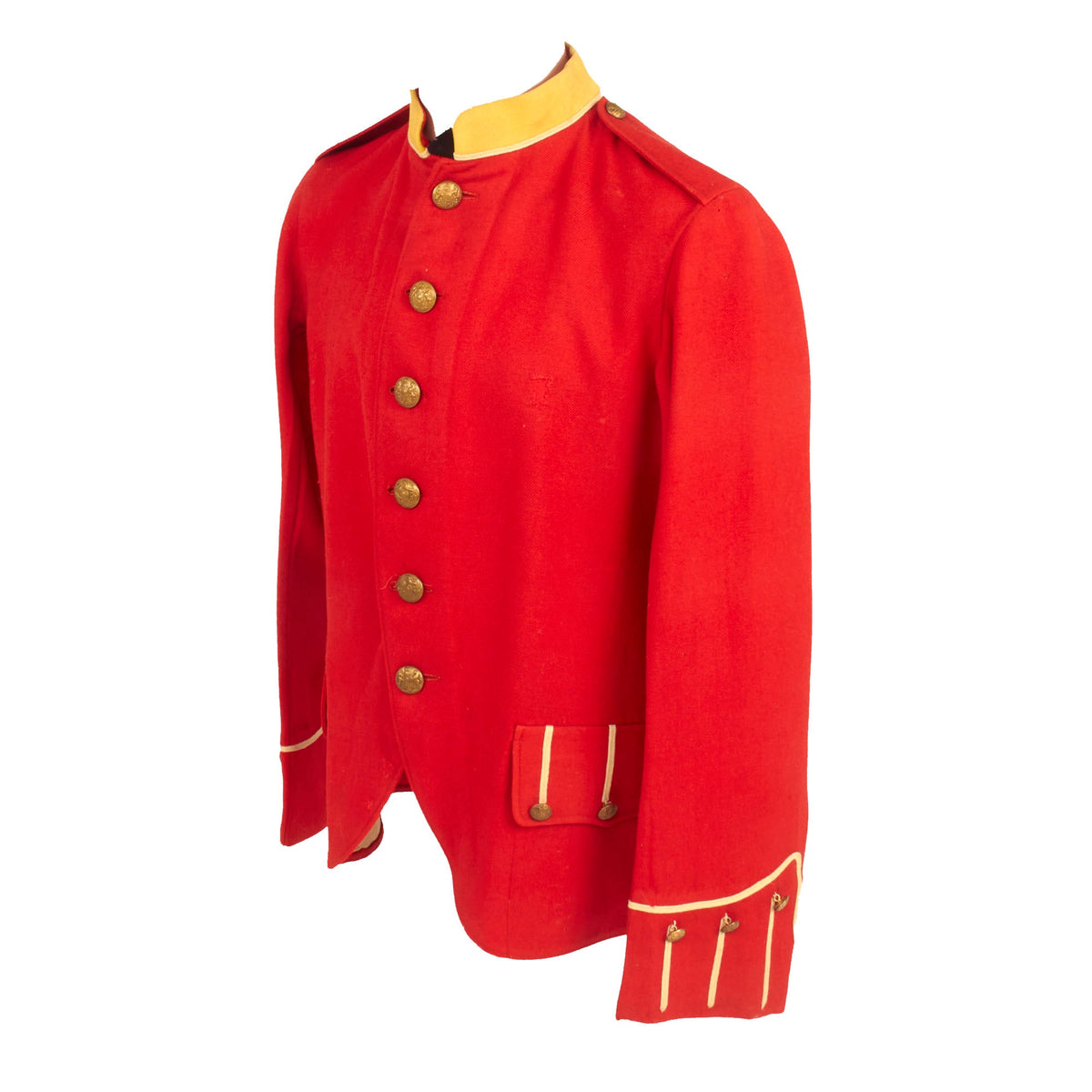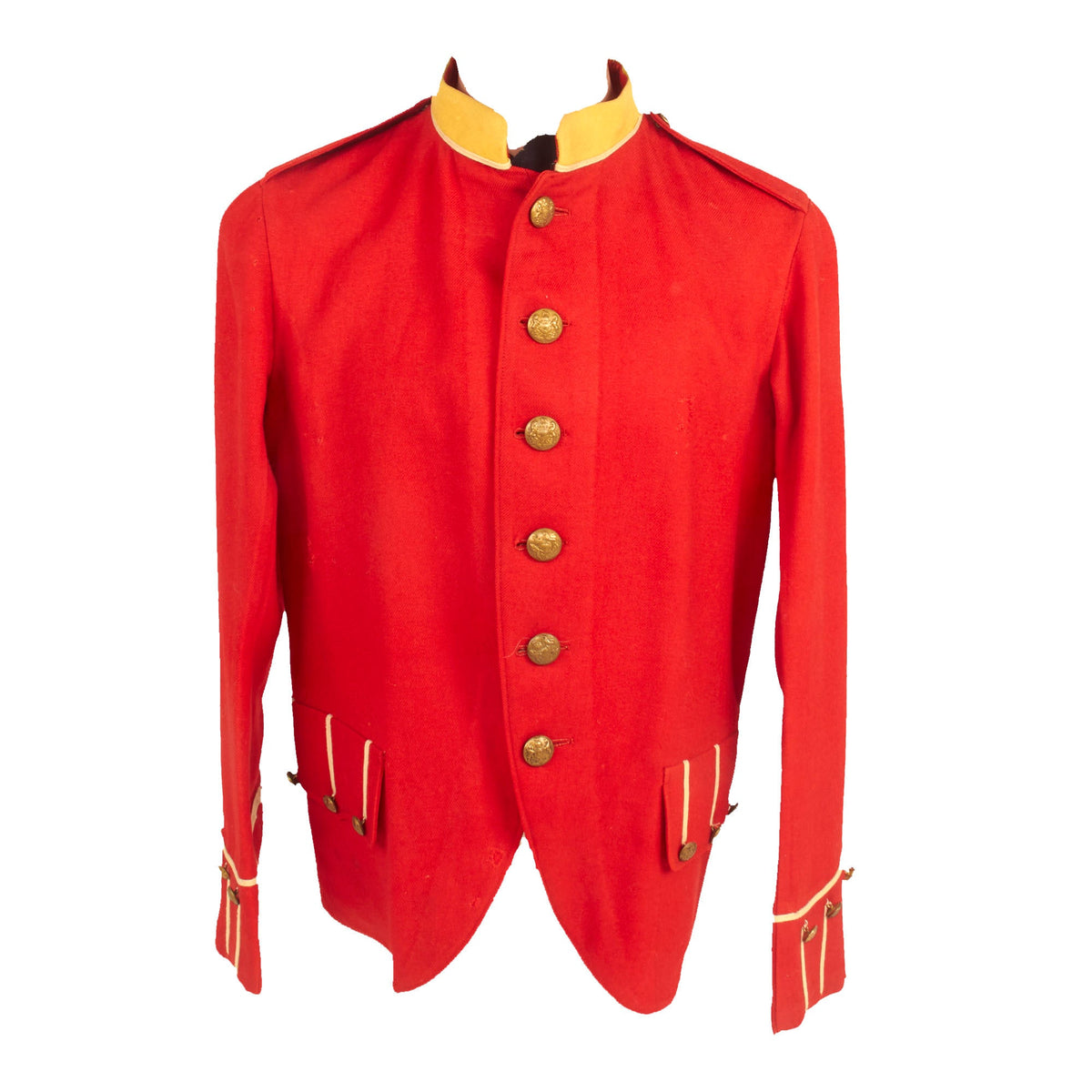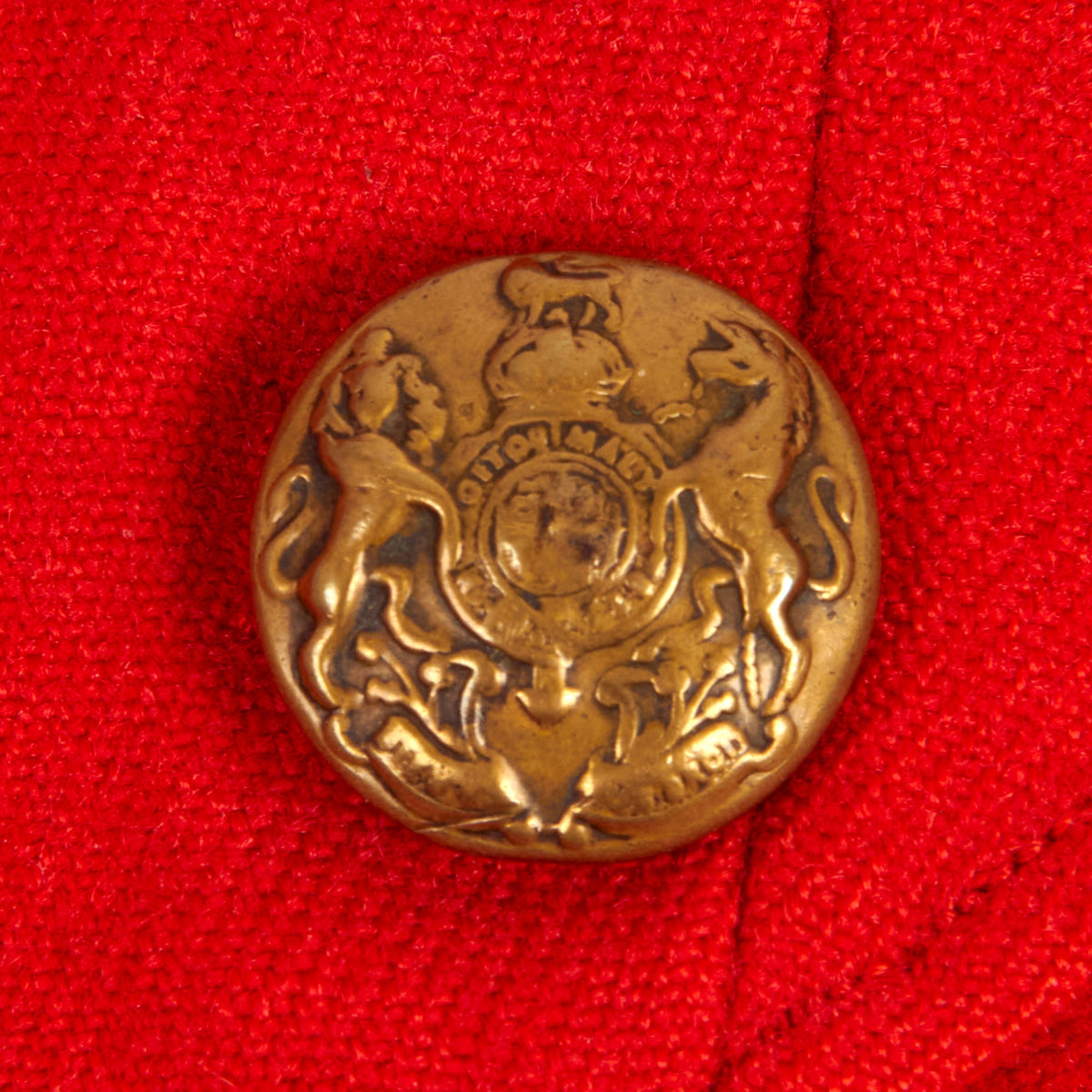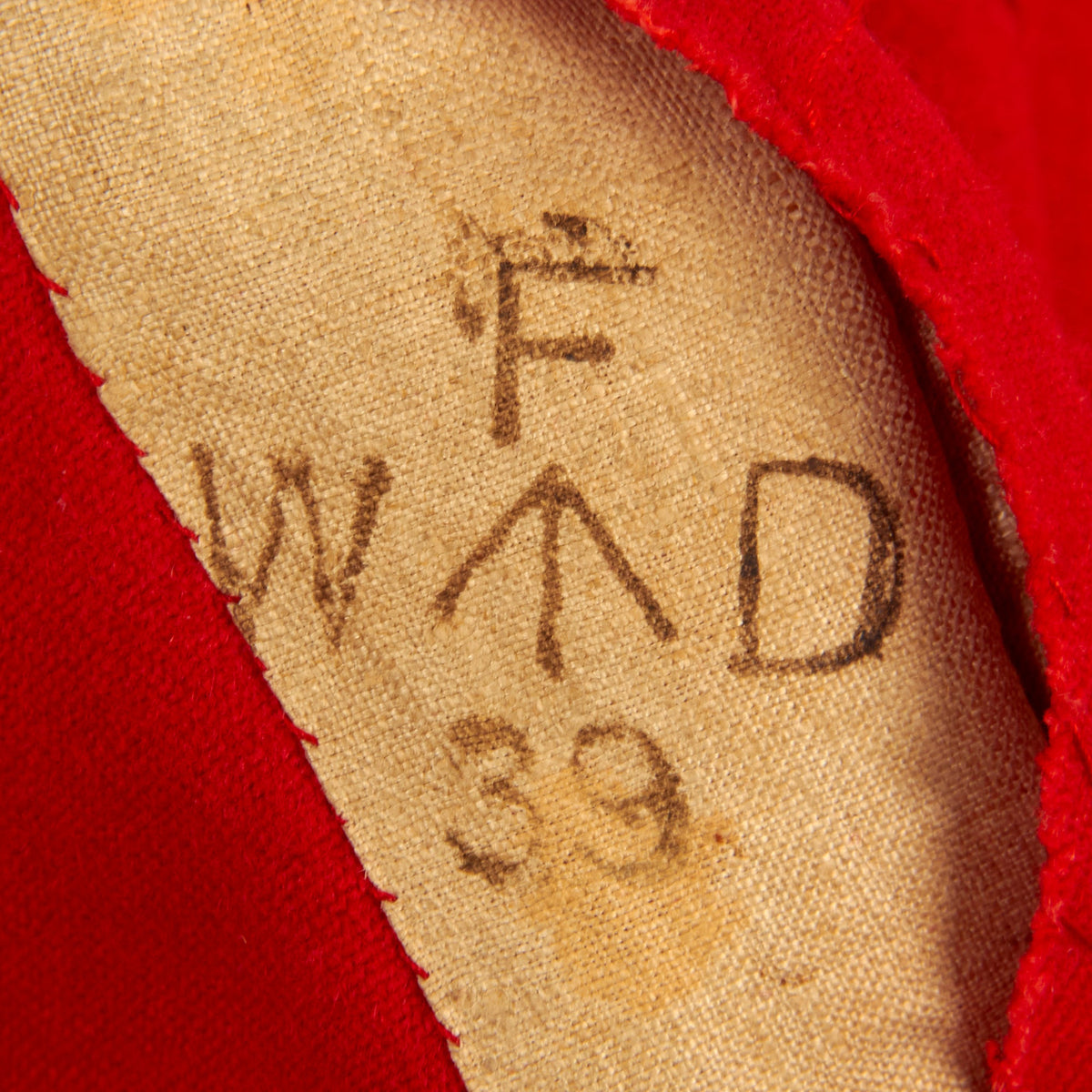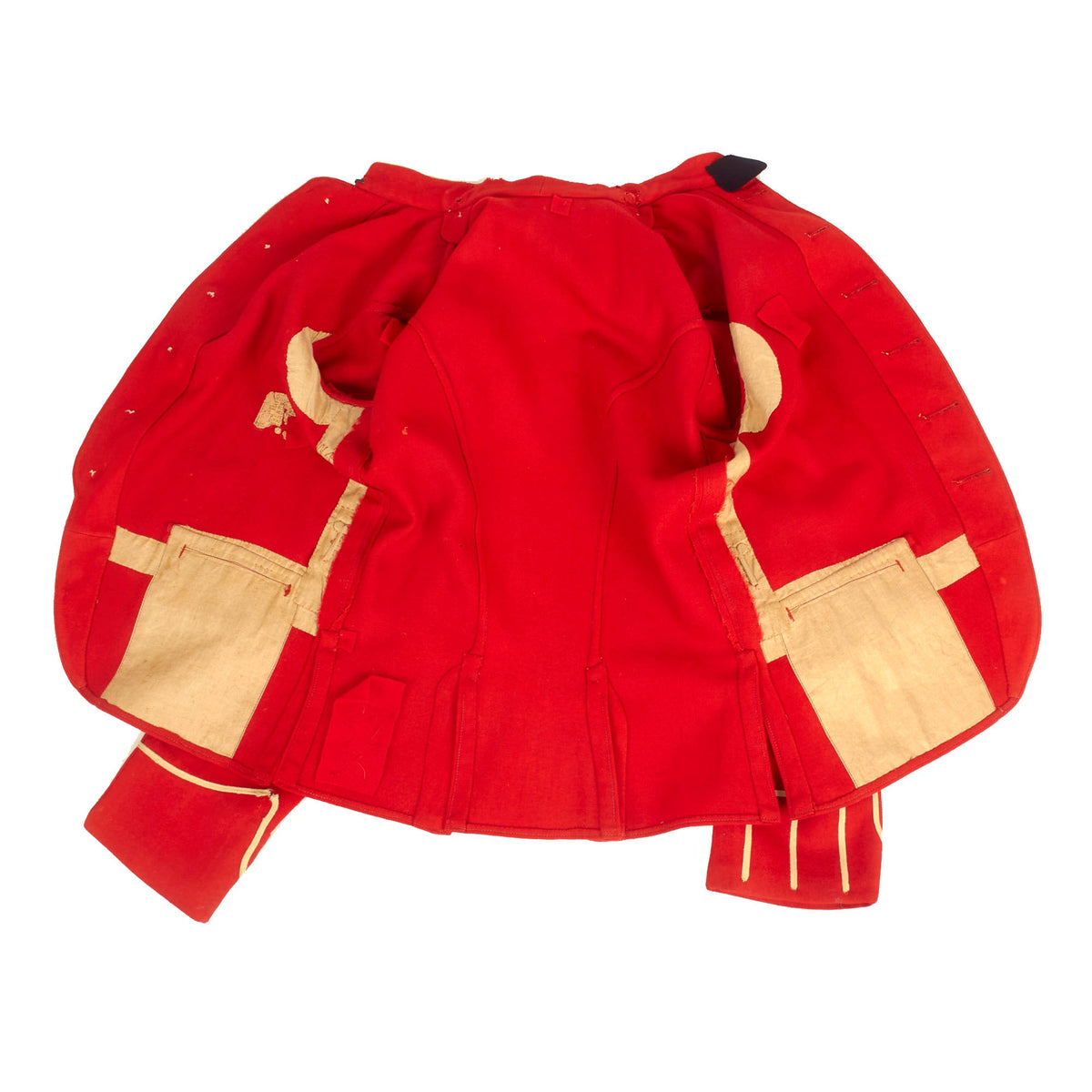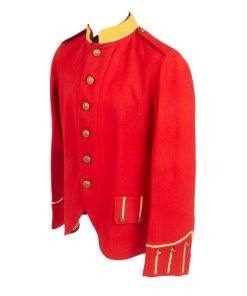Original British Pre-WWI Era Scottish Highland Regiment Scarlet Tunic Original Items
$ 295,00 $ 118,00
Original Items: Only One Set Available. Red coat (also spelled as “redcoat”) or scarlet tunic was a military garment used widely, though not exclusively worn, by most regiments of the British Army, Royal Marines, and some colonial units within the British Empire, from the 17th to the 20th centuries. The scarlet tunic continues to be used into the 21st century, with several armed forces of the Commonwealth of Nations adopting them as their full dress and mess dress uniforms. The uniform and term “redcoat” may have originated in 16th century Tudor Ireland as a derogatory term for the British, as British soldiers in Lord Lieutenant of Ireland’s army wore red coats, the first time English and Scottish soldiers under English command and later British collectively had a red uniform. The term was then brought to America and Europe by Irish emigrants.
From the mid-17th century to the 19th century, the uniform of most British soldiers (apart from artillery, rifles and light cavalry) included a madder red coat or coatee. From 1873 onwards, the more vivid shade of scarlet was adopted for all ranks, having previously been worn only by officers, sergeants and all ranks of some cavalry regiments.
The tunic is a fine example of a scarlet coat and is constructed of kersey wool without a lining. The coat is secured by 6 General Service buttons with matching buttons on the shoulders and breast pockets. There are no markings or stamps present. There is some mothing present and a few minor holes. This is a wonderful set with great research potential.
Comes more than ready for display.
Approximate Measurements:
Collar to shoulder: 9.5″
Shoulder to sleeve: 26”
Shoulder to shoulder: 16.5”
Chest width: 21″
Waist width: 19.5″
Hip width: 20.5″
Front length: 28.5″
The original Highland regiments were raised in the 18th century with the object of recruiting rank and file solely from the Scottish Highlands. However, due to the Highlands becoming extensively depopulated through the course of the 19th and 20th centuries, the Highland regiments of the British Army have witnessed a long-term decline in the proportion of recruits from the Highlands and have long recruited many Lowland Scots and others. The major 20th century exceptions to this rule were the First and Second World Wars, when many Highland men joined up. Around the time that the first Highland regiments were raised the Highlands had recently been a hotbed for several revolts against the establishment, namely the Jacobite Rebellions, so the loyalties of the Highlanders were often deemed suspect in the early history of the Highland regiments.
The first Highland regiment, the Black Watch, was originally raised from clans openly loyal to the status quo in order for the government to better police the Highlands, which were deemed to be both rebellious and lawless by the contemporary British establishment. However, due to a pressing need for personnel in North America during the Seven Years’ War, William Pitt the Elder made the decision to raise new Highland regiments to fight in this global conflict. The war ended in victory and among other things, Canada was secured as a part of the British Empire, while the British East India Company’s position in India was consolidated and expanded, both at the expense of the French. These Highland regiments were disbanded after the war, but other Highland regiments were raised later and, like the rest of the British Army, saw service in various wars including in the Napoleonic Wars.
By the Victorian era, the loyalty of the Highlanders was no longer suspect. Queen Victoria had a personal interest in things Scottish, in particular relating to the Highlands. In addition, Highland regiments had played a conspicuous role in such Victorian conflicts as the Crimean War and the putting down of the Indian Mutiny. The Highland regiments earned a reputation which influenced the mindset of those Scottish regiments which were Lowland in origin. This resulted in the wearing of tartan by Lowland regiments which had previously worn uniforms not clearly distinguishable from their Irish, Welsh and English counterparts. In the case of the Highland Light Infantry, the distinction between Highlanders and Lowlanders was slightly blurred: although classified as a non-kilted Highland regiment it was recruited from Glasgow in Lowland Scotland and bore the title of “City of Glasgow Regiment”.
Scottish bagpipes have been adopted in a number of countries, largely in imitation of the pipers of Highland regiments which served throughout the British Empire. Highland regiments were raised in a number of Commonwealth armies, often adopting formal honorary affiliations with Scottish regiments of the British Army.
Fast Shipping with Professional Packaging
Thanks to our longstanding association with UPS FedEx DHL, and other major international carriers, we are able to provide a range of shipping options. Our warehouse staff is expertly trained and will wrap your products according to our exact and precise specifications. Prior to shipping, your goods will be thoroughly examined and securely secured. We ship to thousands clients each day across multiple countries. This shows how we're dedicated to be the largest retailer on the internet. Warehouses and distribution centres can be located throughout Europe as well as the USA.
Note: Orders with more than one item will be assigned a processing date depending on the item.
Before shipping before shipping, we'll conduct a thorough inspection of the items you have ordered. Today, the majority of orders will be delivered within 48 hours. The delivery time will be between 3-7 days.
Returns
The stock is dynamic and we cannot completely manage it because multiple stakeholders are involved, including our factory and warehouse. So the actual stock may alter at any time. It's possible that you may not receive your order once the order has been made.
Our policy is valid for a period of 30 days. If you don't receive the product within 30 days, we are not able to issue a refund or an exchange.
You can only return an item if it is unused and in the same state as the day you received it. You must have the item in its original packaging.
Related products
Uncategorized
Uncategorized
Uncategorized
Uncategorized
Uncategorized
Uncategorized
Uncategorized
Uncategorized
Uncategorized
Australian WWII Owen MK1 Machine Carbine SMG Custom Fabricated Replica with Sling Original Items
Uncategorized
Uncategorized
Uncategorized
Armored Burgonet Helmet & Polearm from Scottish Castle Leith Hall Circa 1700 Original Items
Uncategorized
Band of Brothers ORIGINAL GERMAN WWII Le. F.H. 18 10.5cm ARTILLERY PIECE Original Items
Uncategorized
Uncategorized
Uncategorized
Uncategorized
Uncategorized
